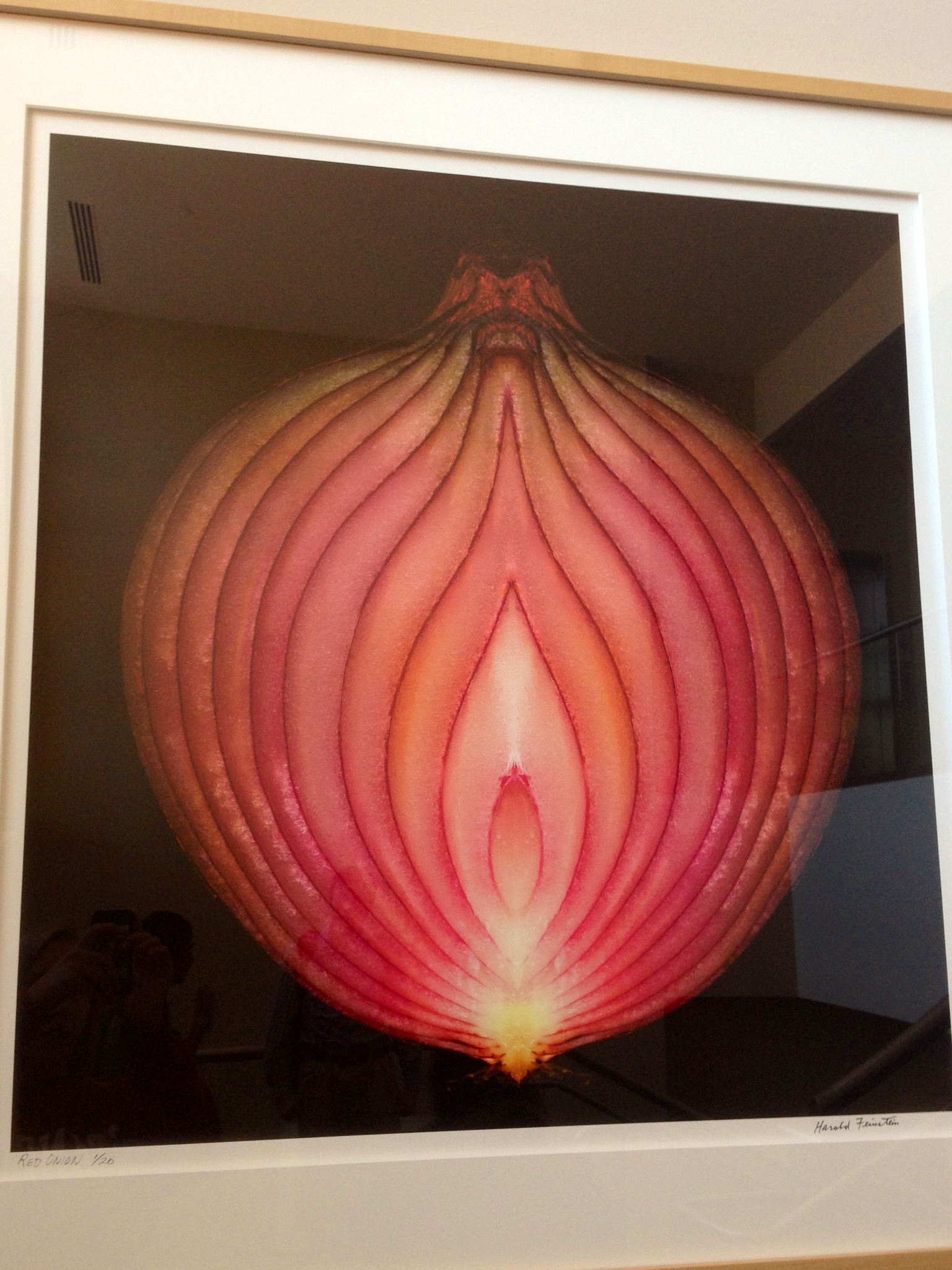There have been increasing reports concerning a framed photograph of an onion in the stairwell of Arrillaga Family Dining Commons. The onion, though it is one among many of the artistically photographed fruits and vegetables adorning the interior of the building, has been drawing attention due to its suggestive nature. Cut in half to expose concentric oblong rings, the onion’s sensuous shape and warm, rosy tone reminiscent of human flesh, are, according to sources, “just unmistakably vaginal.”
“I’m an athlete so I eat here all the time,” said one student who wished to remain anonymous, “And that onion always throws me off. I walk in hungry, and —bam! — I see the onion. It awakens a completely different kind of appetite, you know? Interferes with the whole post-workout protein thing.”
Others have been less affected. “The onion?” asked an art major. “Oh yes, very vaginal. A la Georgia O’Keefe. It’s a nice change of pace, actually. I’m tired of seeing phallic symbols everywhere.”
Another student, however, is preparing a lawsuit against the university. “I’m not allowed to go on record yet,” he said, “But I just have to tell someone. I can’t sleep, and I certainly can’t eat. It all started at Arrillaga Late Nite. I’d had some strangely dirty thoughts about that onion before, but I was alone on the stairs and it appeared, massive and female, out of the gloom. The next day I started seeing genitalia everywhere. Asparagus, arugula… salad leaves have some kinky possibilities. Have you ever looked at Brussels sprouts in that way before? And you know that weird tub of butter they leave out for the weirdoes who want to make PB&J? Don’t get me started.”
“It’s not just the dining hall,” he added. “It’s getting its dirty little fingers into every nook and cranny of my life. I can’t even deal with my roommate’s minifridge anymore.”
Aside from a night janitor who cites the onion as the highlight of his day, university officials are blissfully unaware that the dining hall décor is inspiring anything other than ideas about healthy eating habits.








